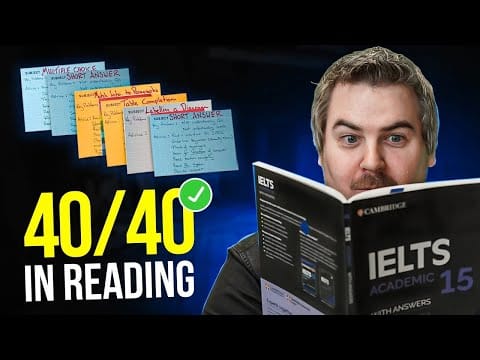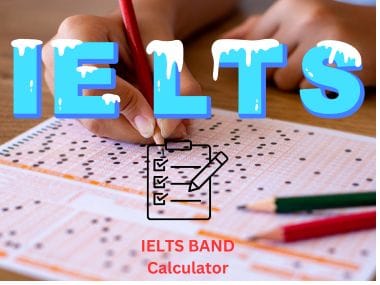Master IELTS Reading with Proven Strategies
Welcome to the ultimate guide on IELTS Reading tips! If you’re aiming for a high band score, mastering the reading section is crucial. This guide provides step-by-step strategies for tackling all 12 question types you may encounter on test day. These IELTS Reading tips have helped thousands of students achieve a band score of 9. At the end of this guide, you’ll also find two free practice tests and detailed walkthroughs. So, let’s dive in and boost your IELTS Reading score!
Understanding the IELTS Reading Test Format
Before applying strategies, it’s important to understand the test format. The IELTS Reading test consists of three sections, each progressively more difficult. You’ll encounter one long passage per section, sourced from books, journals, newspapers, and magazines. You have 60 minutes to answer 40 questions, making time management essential.
The test covers diverse topics, so practicing different reading materials will enhance comprehension skills. Additionally, familiarizing yourself with various subject areas will help you locate key information quickly.
Sentence Completion Questions
Sentence completion questions require you to fill in blanks with words from the passage. Two common pitfalls are ignoring instructions and spelling mistakes. To avoid errors, follow these strategies:
Strategies:
- Read Instructions Carefully: Pay attention to the word limit. Exceeding it results in incorrect answers.
- Understand the Context: Read the incomplete sentence before scanning the passage.
- Predict the Answer: Identify the missing word type (noun, verb, adjective) before searching for it.
- Scan for Keywords: Find the answer’s location first, then determine the correct word.
- Double-Check Spelling: Even a minor spelling mistake will make your answer incorrect.
Summary Completion Questions
These questions require you to complete a summary with missing words. They test both your comprehension and grammatical accuracy.
Strategies:
- Pay Attention to Word Limits: Read the instructions to ensure compliance.
- Understand the Summary First: This will help you locate the relevant passage faster.
- Predict the Missing Words: Consider grammar and content while predicting the answers.
- Scan for Keywords: Find key terms in the summary and match them to the passage.
- Check Grammar and Spelling: Make sure the answer is grammatically correct.
Multiple Choice Questions
Multiple choice questions can be tricky due to similar-looking answer choices. Here’s how to tackle them effectively.
Strategies:
- Read the Questions First: This helps you focus on relevant parts of the text.
- Skim the Passage: Get a general idea before locating details.
- Compare Answer Choices: Identify subtle differences between options.
- Locate the Correct Section: Finding the passage section relevant to the question is key.
- Eliminate Wrong Answers: Narrow down your options by removing incorrect ones.
Short Answer Questions
Short answer questions require precise answers. Avoid unnecessary words and spelling errors.
Strategies:
- Analyze the Question: Identify what is being asked.
- Highlight Keywords: Use key terms to locate relevant text sections.
- Consider Synonyms: The passage may paraphrase the question.
- Read Carefully: Avoid rushing through the passage.
- Keep Answers Concise: Stick to the required word limit.
Diagram and Summary Completion
These question types involve labeling diagrams or completing summaries. Unfamiliar topics can be challenging, but these strategies will help:
Strategies:
- Follow Instructions Carefully: Check for word limits.
- Examine the Diagram First: Understanding it beforehand saves time.
- Identify Keywords: Use them to locate relevant text.
- Find the Correct Passage Section: This prevents reading unnecessary information.
- Ensure Accuracy: Verify spelling and grammar.
True/False/Not Given and Yes/No/Not Given Questions
These questions test your ability to distinguish facts from opinions.
Strategies:
- Understand the Statements: Read the entire statement before answering.
- Identify Synonyms: The passage may use different wording.
- Match the Statement with the Passage: Ensure your answer is backed by text evidence.
- Decide Carefully: Consider whether the statement is true, false, or not given.
- Focus on the Writer’s Opinion: For yes/no/not given questions, assess the author’s viewpoint.
Conclusion
By applying these IELTS Reading tips, you’ll improve your test-taking strategies and increase your confidence. Practice regularly, manage your time effectively, and stay consistent. CoreSkills offers free IELTS practice tests, expert guidance, and personalized feedback to help you reach your target band score.
Follow CoreSkills on Social Media
Stay updated with expert tips and free resources by following CoreSkills on YouTube, Instagram, and Facebook. Join our online community for additional IELTS support!


